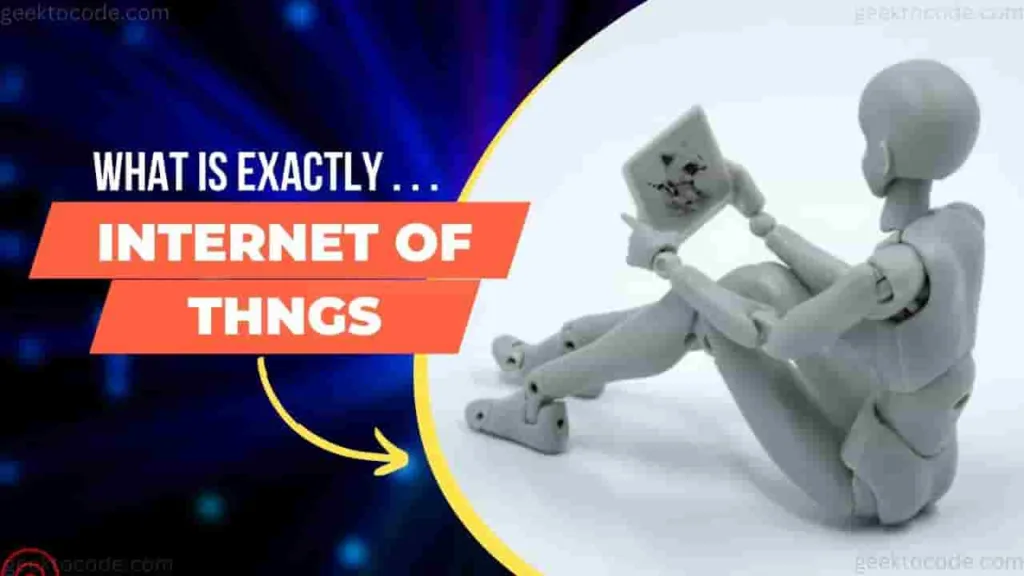Kevin Ashton first used the term “Internet of Things” or IoT in 1999. But the Internet of Things didn’t really take off on a global scale until Gartner added it to its list of new emerging technologies in 2011. In the world as of 2021, there were 21.7 billion active connected devices, of which more than 11.7 billion (or 54 percent) were Internet of Things (IoT) devices. This indicates that there are more Internet of Things (IoT) devices than non-IoT devices in the world.

What is IoT?
The Internet of Things is a network of physical objects, or “things,” that are embedded with sensors, software, and other technologies in order to connect and exchange data with other equipment and systems over the internet (IoT). These gadgets include everything from common household items to high-tech industrial tools.
Organizations across a range of industries are increasingly utilising IoT to run more smoothly, better understand their customers to provide better customer service, enhance decision-making, and raise the value of the company. Today, there are more than 7 billion connected IoT devices, and according to experts, there will be 10 billion by 2020 and 22 billion by 2025.
How does IoT work?
The Internet of Things (IoT) ecosystem is made up of web-enabled smart devices that use embedded systems, such as processors, sensors, and communication hardware, to gather, send, and act on the data they gather from their surroundings. By connecting to an IoT gateway or other edge device, which either sends data to the cloud for analysis or analyses it locally, IoT devices share the sensor data they collect. These devices converse with other similar devices on occasion, acting on the data they exchange. Although people can interact with the devices to set them up, give them instructions, or access the data, the devices do the majority of the work without their help.
These IoT applications have a significant impact on the connectivity, networking, and communication protocols used by these web-enabled devices.
IoT can also use machine learning and artificial intelligence (AI) to help make data collection processes simpler and more dynamic.
What Are IoT Devices?
IoT devices are hardware objects that collect and exchange data online, such as sensors, gadgets, appliances, and other machines. They can be integrated into other IoT devices and are programmed for specific applications. An IoT device in your car, for instance, could detect traffic up ahead and automatically notify the person you’re about to meet of your impending delay.
Why is Internet of Things (IoT) so important?
One of the most significant 21st-century technologies in recent years has been the Internet of Things (IoT). Continuous communication between people, processes, and things is now possible thanks to the ability to connect commonplace items—such as kitchen appliances, automobiles, thermostats, and baby monitors—to the internet via embedded devices.
Physical things can share and gather data with little assistance from humans thanks to low-cost computing, the cloud, big data, analytics, and mobile technologies. Digital systems can record, monitor, and modify every interaction between connected things in today’s hyperconnected world. Digital and physical worlds collide, but they work together.
Examples of IoT Devices
- Home Security
- Activity Trackers
- Industrial Security and Safety
- Augmented Reality Glasses
- Motion Detection
- Google Home Voice Controller
- Amazon Echo Plus Voice Controller
- August Doorbell Cam
- August Smart Lock.
- Foobot
- Etc….
What modern technologies have made possible IoT?
Although the concept of IoT has been around for a while, it has only recently become a reality thanks to a variety of recent technological advancements.
Connectivity, cloud computing platforms, machine learning and analytics, conversational artificial intelligence, and access to low-cost, low-power sensor technology (AI).
Natural language processing (NLP) has been made available on Internet of Things (IoT) devices, such as the digital personal assistants Alexa, Cortana, and Siri, and has become more appealing, accessible, and practical for use at home thanks to advancements in neural networks.
What are IoT’s benefits and drawbacks?
IoT has several benefits, some of which are listed below:
- Access to information on any device, at any time, from anywhere.
- Communication between connected electronic devices has been improved.
- Saving time and money while transferring data packets over a connected network.
- By reducing the need for human intervention and improving service quality, tasks can be automated.
IoT has also several number of drawbacks these are:
- The likelihood that a hacker will steal private information rises as the number of connected devices rises and information is shared more widely between devices.
- Enterprises may eventually have to deal with enormous numbers of IoT devices, perhaps even millions, and managing and collecting data from all those devices will be difficult.
- Every connected device will most likely become corrupted if the system has a bug.
- Since there is no global IoT compatibility standard, it is challenging for devices from various manufacturers to communicate with one another.



